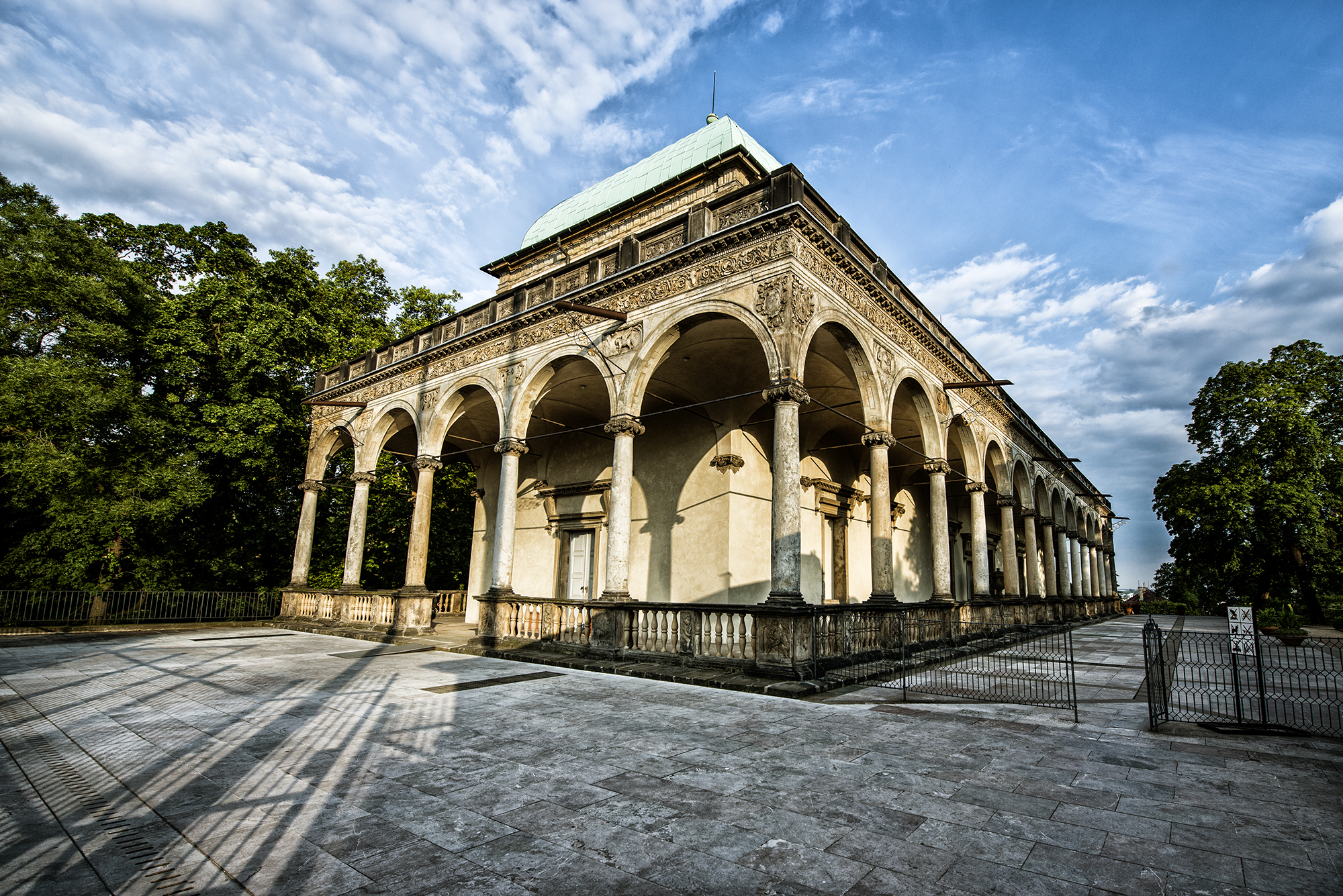Breadcrumbs navigation
Prague Castle – Queen Anne's Summer Palace (Letohrádek královny Anny)
A beautiful Renaissance building in the Royal Gardens of the Prague Castle. Ferdinand I commissioned the summer palace, built on the eastern edge of the Royal Gardens between 1538 and 1560, for his wife Anna Jagiellon. Today the Summer Palace provides exhibition space for fine art and applied arts exhibitions.
Contacts
- Prague Castle – Queen Anne's Summer Palace (Letohrádek královny Anny)
- Mariánské hradby 1
- 119 08 Praha 1 – Hradčany
- +420224372435
- +420224372419
Object history
Queen Anne's Summer Palace
Behind the Prague Castle walls, Ferdinand I established a royal (imperial) garden, in which he started to build a summer house in 1538 for his wife Anna of Jagiellon, who unfortunately did not live to see the completion of the building, as she died in 1547 after giving birth to her 15th child. Ferdinand I himself did not wait to see the house finished, and he left Prague after the fire in 1541.
Queen Anna’s Summer house (incorrectly called Belvedere) is the purest Renaissance architecture outside the Italian territory. It was built after a project and model of an Italian builder and stonemason Paolo della Stella in a style of Italian Renaissance by the builder Giovanni Spatio, who was succeeded by G. Maria del Pambio. Fire of the castle in 1541 interrupted the construction, which continued in the years 1548 - 1552 under the command of Paolo della Stella. He also carved out the stone reliefs on the gallery arcades. Stella decorated the summer house richly. The building is wreathed in 80cm high ornamental and figurative frieze; 36 pillars of the outside arcades have decorated Tuscan heads, there are 114 reliefs on the walls. They mostly depict scenes from mythology, hunting and wars. Among them, there is the figure of the founder Ferdinand I with the Order of the Golden Fleece on his chest, offering the lady - his wife, Queen Anna - a fig tree blossom. The stonework on the fine-grained sandstone is unbelievably fine.
In 1563, the summer house was completed by Hans Tirole and mainly Bonifác Wohlmut, who added the first floor. Unique copper roof shaped as a turned keel was then decorated by red and white stripes and painted symbols of the Bohemian kingdom. The ground floor with residential areas was surrounded by arcade gallery; there was a dance hall and a gallery on the first floor. The summer house was mostly used by Rudolf II, who established an astronomical observatory on the first floor. Among the guests, there were Tycho de Brahe, Johanes Kepler, and even the emperor himself, who died here after losing the royal title (1612). After his death, the summer house was abandoned and in 1648 it was plundered by the Swedish soldiers. The building was given different names throughout time: Belvedere for its beautiful view, Ferdinandeum after its founder, or Observatorium.
Joseph II gave the summer house to the army, which established an artillery laboratory there. In 1836, governor count Karel Chotek managed to evict the artillery, on the occasion of coronation of Ferdinand V. After that, the architects Bernard Grueber and Petr Nobile renewed the building in 1841 - 55 and modified it into a Picture gallery of the patriotic art lovers. A monumental Classicist staircase was built. In the years 1851 - 65, the cycle of historical scenes from Bohemian history was painted on the 1st floor walls, based upon drafts of the Academy director Kristián Ruben. The paintings were realized by his pupils Antonín Lhota, Josef Matyáš Trenkwald, Karel Svoboda and Emil Laufer. Architect Pavel Janák restored the summer house in the beginning of the 50s, and since then it has been used as an exhibition hall. Another reconstruction took place in 1988 - 1991.
In front of the summer house, there is the well known Singing fountain. The draft was made by the court painter Francesco Terzio. The Renaissance fountain was cast in the years 1564- 1568 by metal founder Tomáš Jaroš (the author of St. Vitus Cathedral’s largest bell - Sigismund). The material selected was bell-metal and bronze; the fountain is placed in the original position in the stone pool, where it was settled in 1573. Water drops falling on the rim of the lower bowl evoke lovely tones when you listen to them. The middle of the fountain depicts a shepherd and a Greek god Pan - protector of forests and streams. The top is furnished with a figure of a little piper (the only copy on an otherwise original fountain).
Prague Castle has been a National Cultural Monument since 1962
Information source: www.hrad.cz


